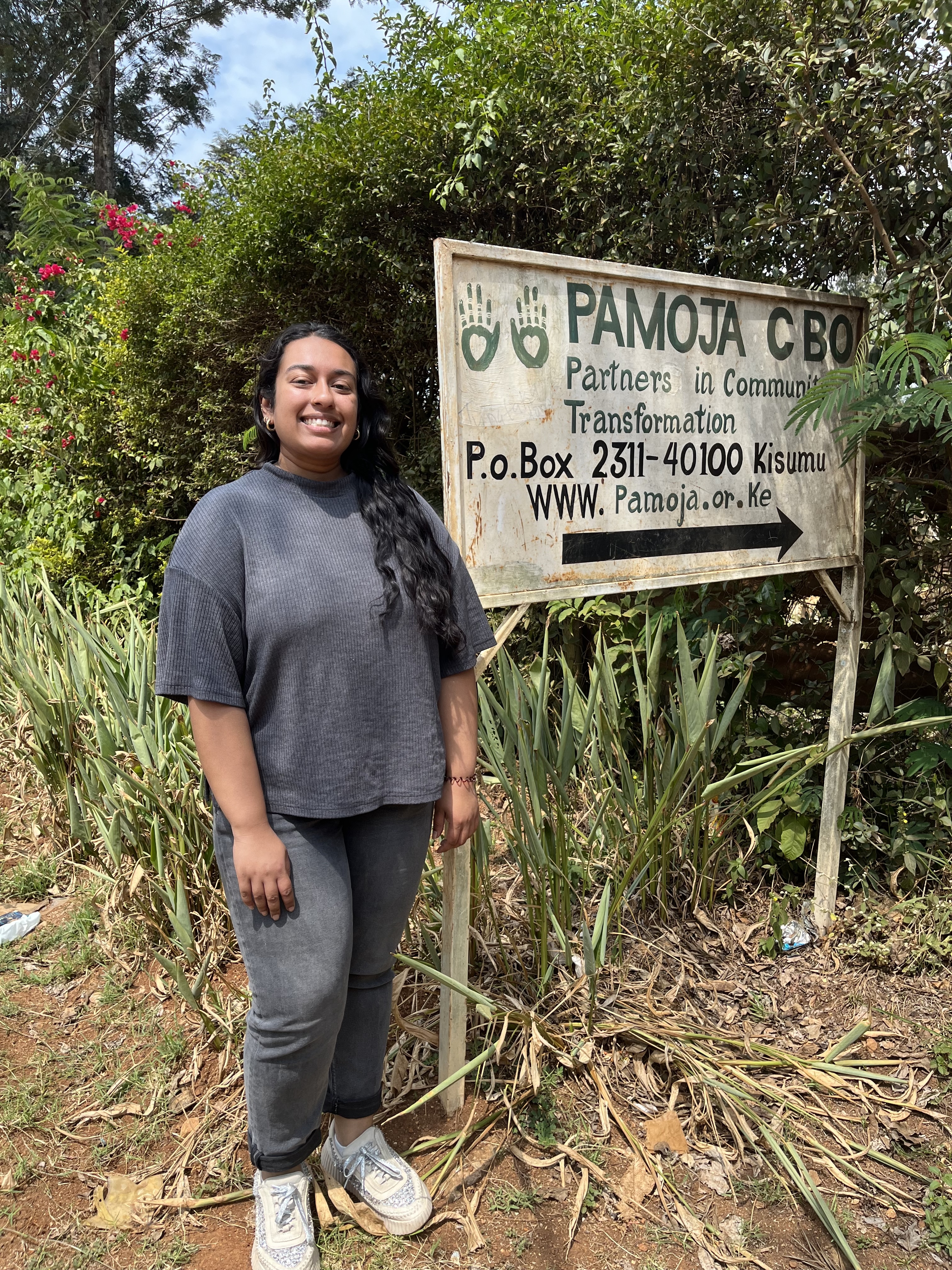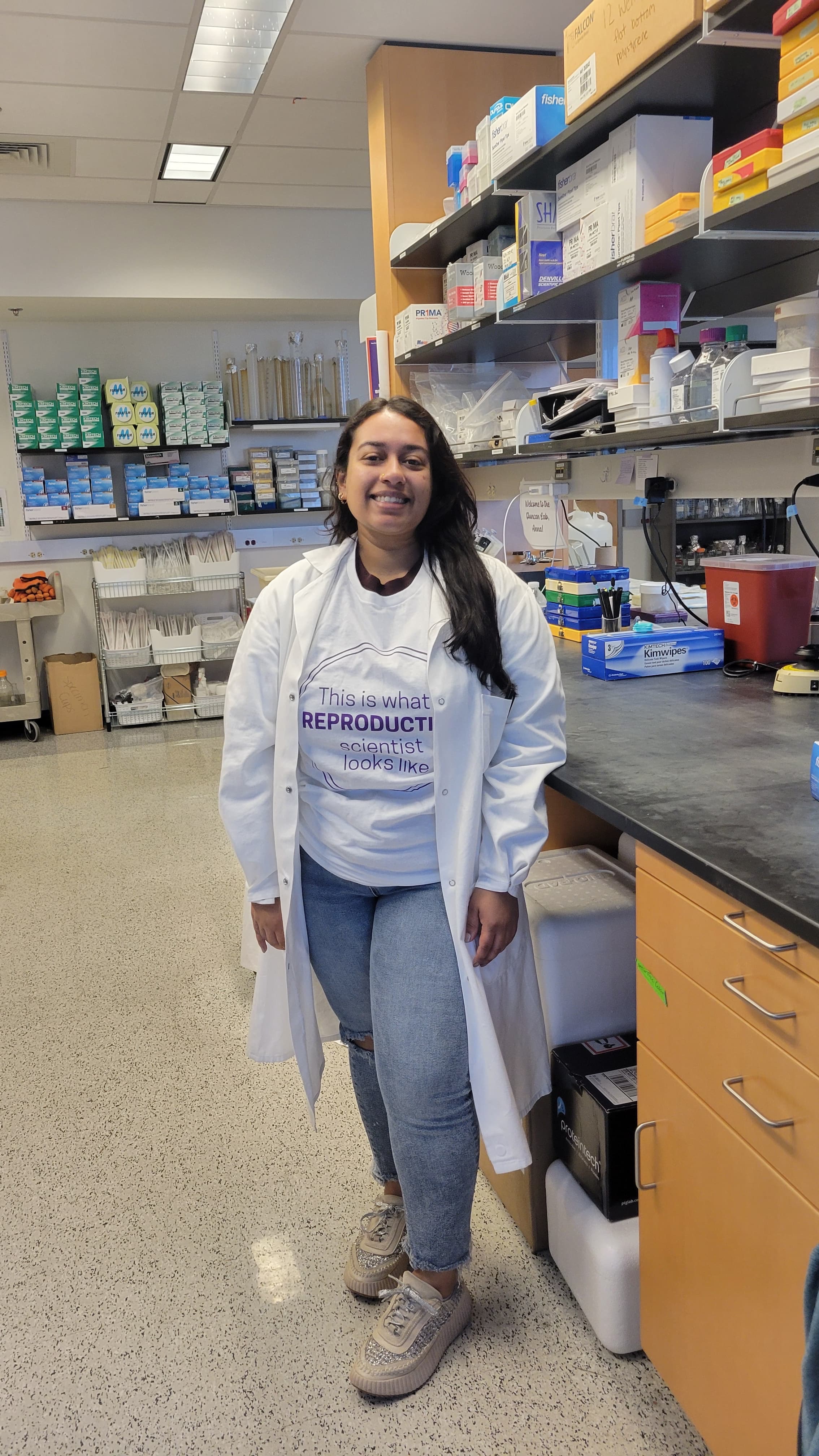Prianka Hashim travels to Kenya as Part of her Master’s in Public Health Training
You recently traveled to Kenya as part of your research training, could you tell us about the focus of your trip?
I traveled to Kisumu, Kenya to work with Pamoja CBO which was co-founded by a Northwestern Alumni, Patrick Owuor and has been collaborating with Northwestern’s Access to Health Project since 2022. Pamoja CBO is a women-led, child and human-centered grassroots organization that prioritizes community health programming, education and training, water & sanitation, and youth and women economic empowerment to improve the quality of life for the communities in rural Kenya. My work was focused on reducing sexual- and gender-based violence (SGBV) in the community through a know your rights digital advocacy campaign and submitting a grant proposal to further fund this initiative.

What specific challenges related to public health did you encounter during your time in Kenya?
Kisumu is the third largest city located in Western Kenya and Kisumu county has the second highest HIV incidence in the country highlighting the need for public health initiatives to prevent future HIV cases as well as help manage current cases, in addition to the broader need for sexual and reproductive health access. Additionally, SGBV has high incidence with 45% of women and girls experiencing some form of SGBV in Kisumu. Most of the public health challenges are due to community based organizations and non-governmental organizations having to fill the gaps that the Ministry of Health is unable to support. Related to SGBV, there’s a gap in knowledge in the community about what SGBV is, what are the health impacts, and also how to access medical and legal resources if you are a survivor of SGBV.
What are the next steps for your research, and how do you plan to apply your findings to improve public health?
The next steps are expanding upon the digital know your rights campaign that I helped work on. The ultimate goal is to completely eradicate the incidence of SGBV within the community and to do so, it’s essential to include all the stakeholders involved in health and wellbeing. I’m continuing to work remotely with Pamoja CBO to assist with this initiative through three interconnected initiatives. The first is to work on sensitization and capacity building within the communities to raise knowledge of what resources are available and to increase advocacy within the community. The second is creating sustainable collaborations between stakeholders, especially strengthening medical-legal partnerships to ensure that survivors get quick access to medical care and legal representation if they choose to pursue criminal charges against their preparators. And lastly empowering girl and boy champions within the community who will be well-versed in what SGBV is and what resources are available so they can be a resource for their communities, especially within rural villages that may not have access to Pamoja CBO’s social media campaigns.
Were there any surprising or unexpected experiences that you had while conducting research on your trip?
I was truly impressed by how well-known Pamoja CBO is within the community and how they are considered to be a trusted source and members of the community across Kisumu County. Everywhere I traveled in the field, as soon as community members heard we were with Pamoja CBO, they were more than willing to talk to us. Through Pamoja’s multiple initiatives, they have reached over 55,000 beneficiaries since they were founded in 2007. I also had the chance to see hippos in the wild during a weekend excursion to Lake Victoria which was extremely exciting!

How do you feel you have grown as a scientist after this trip?
Being able to go to Kisumu and work with Pamoja CBO really helped me to think about the needs of individuals and the reproductive health issues they face, allowing me to think more deeply about the work we’re doing at the bench and the populations it has the potential to serve. I also thought about access issues, such as with contraceptives, where we think about lack of access surrounding physical supply. But often, bottlenecks of access may be more related to trust or lack of knowledge surrounding the contraceptives themselves, highlighting the need to build medical trust. My trip really highlighted the need to collaborate with local organizations and researchers who have built trust with the community and have a better understanding of their health needs. These local groups on the ground also have insight on what is culturally acceptable or what roadblocks exist, which can help guide our science.
What advice would you share to young scientist beginning their research whether it is addressing health issues at the bench or in health care systems within communities?
Many of us, especially those performing research in translational settings, are working towards improving human health. Regardless of if you are at the bench or working with communities, there’s a need to collaborate with researchers in different disciplines to get our scientific advances from bench to bedside. It’s important to think about your work from different perspectives and provide your expertise as well. The intersection of the PhD-MPH dual degree allows me to scientifically investigate potential solutions to existing public health problems.